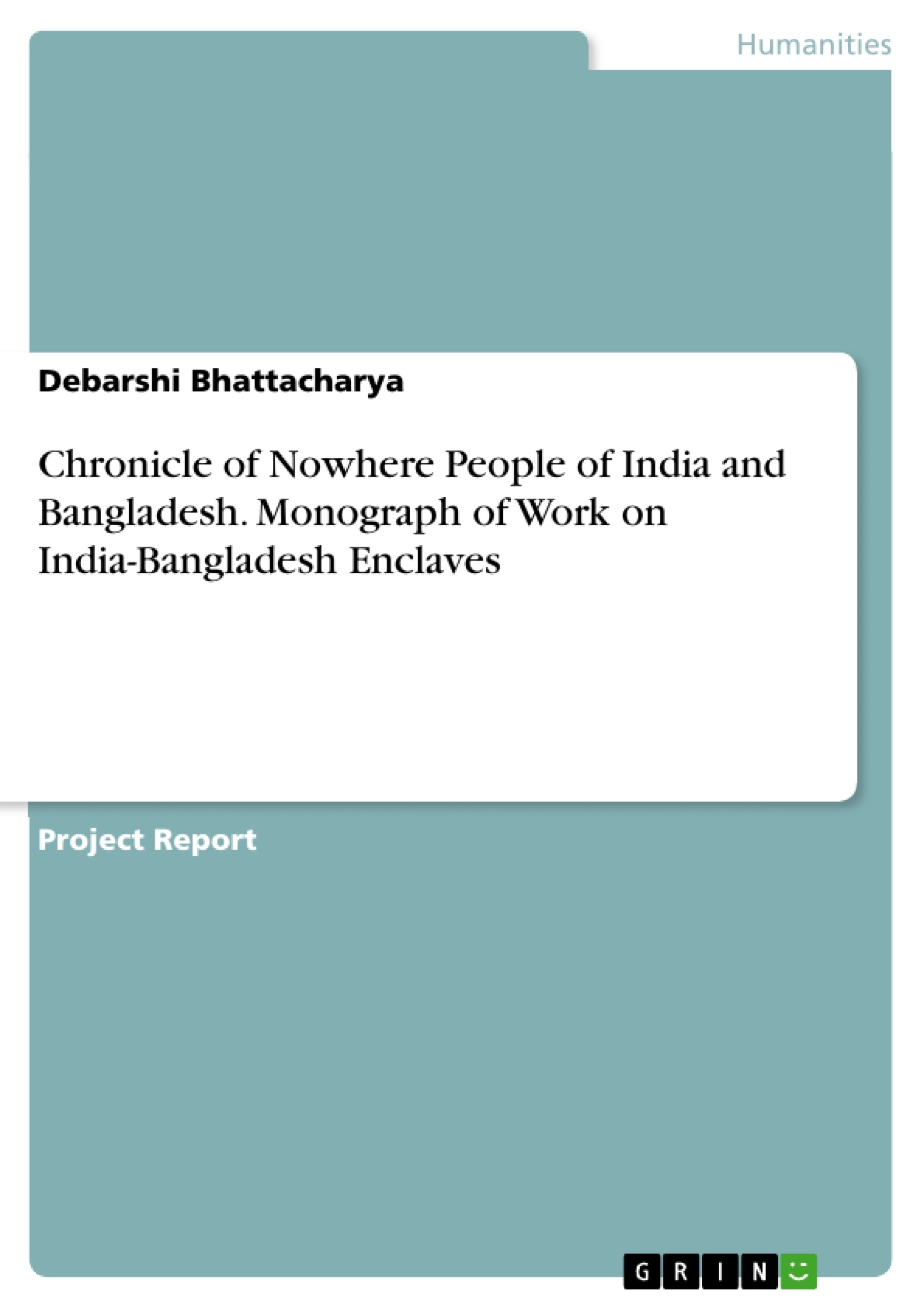Formation of enclaves in India and Bangladesh was the shocking outcome of historical partition of India in the year 1947. As a dire consequence, inhabitants of enclaves of both the countries were enforced to subsist in ‘no-man’s land’ as ‘nowhere people’ till 67 years after India’s independence and partition just due to derision of historical and political destiny. These marginalized people were unfairly deprived from getting basic amenities, rights, opportunities and Governmental support from either country until signing of the historic Land Boundary Agreement (LBA) between India and Bangladesh in the year 2015.
As per LBA, 2015, 51 Bangladeshi enclaves inside Indian territory and 111 Indian enclaves inside Bangladesh territory were actually transferred to each other with effect from the midnight of 31 July 2015. A study had been undertaken through extensive field survey at the enclaves of both the countries to assess and analyze pre-LBA, 2015 execution status of and post-execution impact of LBA, 2015 on the people of these enclaves. For the purpose, questionnaire survey, personal interaction, group discussion, interview had been conducted to gather information from enclaves’ people, Govt. officials, representatives of enclaves’ union, public representatives etc. For the theoretical part of the study, various journals, periodicals, newspapers, reference books, Govt. reports, articles, reports of previous researchers, reports of electronic and print media etc. had been extensively considered.
Entire population of erstwhile Indian and Bangladeshi enclaves covered under the study genially welcomed exchange of enclaves through LBA, 2015, as they got rid of their exiled life of long 67 years in enclaves by virtue of LBA, 2015. But even after execution of LBA, 2015, major problematic issues in these erstwhile enclaves have not yet been resolved; nor could enclaves’ people enjoy the quality of life enjoyed by their neighbours living just around these erstwhile enclaves. All the erstwhile enclaves’ people are still feeling anxious regarding their safe resettlement in these erstwhile enclaves. Most of them have not yet been satisfied regarding Govt. initiatives for infrastructural development within erstwhile enclaves as well as regarding their safe rehabilitation in erstwhile enclaves.
Inhaltsverzeichnis (Table of Contents)
- Abstract of the topic and Key Words
- Chapter 1 : Introduction about India-Bangladesh Enclaves
- Chapter 2 : Background of Creation of India-Bangladesh Enclaves
- Chapter 3 : The Process to De-enclave
- Chapter 4 : Objectives and Location of the Study
- Chapter 5 : Materials and Methodology
- Chapter 6 : Status of Enclaves' People during Pre-LBA, 2015 Execution Period
- Chapter 7 : Status of Enclaves' People during Post-LBA, 2015 Execution Period
- Chapter 8 : Comparative Analysis of the Status of Erstwhile Enclaves' People of India and Bangladesh
- Chapter 9 : Conclusions
Zielsetzung und Themenschwerpunkte (Objectives and Key Themes)
The book aims to provide a comprehensive analysis of the historical formation and subsequent resolution of enclaves between India and Bangladesh. It examines the impact of the Land Boundary Agreement (LBA) of 2015 on the lives of enclave residents, highlighting the challenges and opportunities arising from this significant event.
- Historical context and creation of India-Bangladesh enclaves
- The socio-economic and political realities of enclave residents before the LBA
- The process of de-enclaving and the implications of the LBA
- The impact of the LBA on the lives of enclave residents in both India and Bangladesh
- The challenges and opportunities for enclave residents in the post-LBA era
Zusammenfassung der Kapitel (Chapter Summaries)
- Chapter 1: This chapter provides an introduction to the issue of India-Bangladesh enclaves, highlighting their unique historical context and the challenges faced by residents due to their isolated and marginalized status.
- Chapter 2: This chapter delves into the historical background of the creation of enclaves, tracing the roots of this complex geopolitical situation to the partition of India in 1947.
- Chapter 3: This chapter explores the process of de-enclaving, outlining the steps taken towards resolving the longstanding issue of enclaves through the signing and implementation of the LBA of 2015.
- Chapter 4: This chapter defines the objectives of the study and delineates the geographic scope of the research, focusing on the specific areas where enclaves were located.
- Chapter 5: This chapter details the methods used to gather data for the study, including field surveys, interviews, and document analysis.
- Chapter 6: This chapter analyzes the status of enclave residents in India and Bangladesh before the LBA, examining their socio-economic conditions and the challenges they faced.
- Chapter 7: This chapter focuses on the status of enclave residents in the post-LBA era, examining the impact of the agreement on their lives and the progress made in improving their conditions.
- Chapter 8: This chapter provides a comparative analysis of the experiences of erstwhile enclave residents in India and Bangladesh, highlighting both commonalities and differences in their post-LBA realities.
Schlüsselwörter (Keywords)
The book revolves around the concepts of enclaves, adverse possession, the exchange of enclaves, enclave settlement camps, and the Land Boundary Agreement (LBA).
- Quote paper
- Debarshi Bhattacharya (Author), 2017, Chronicle of Nowhere People of India and Bangladesh. Monograph of Work on India-Bangladesh Enclaves, Munich, GRIN Verlag, https://www.grin.com/document/429731



